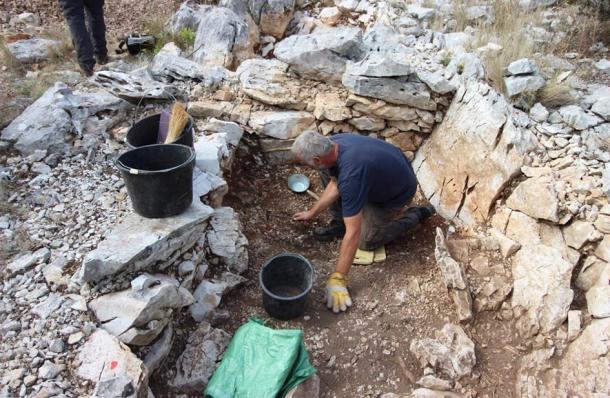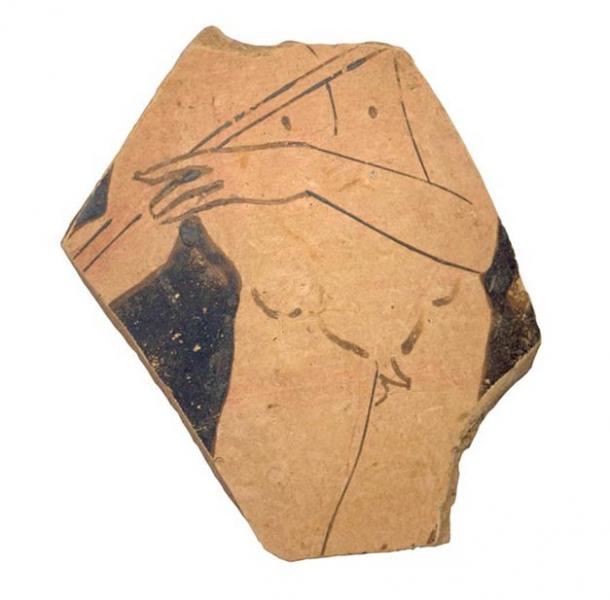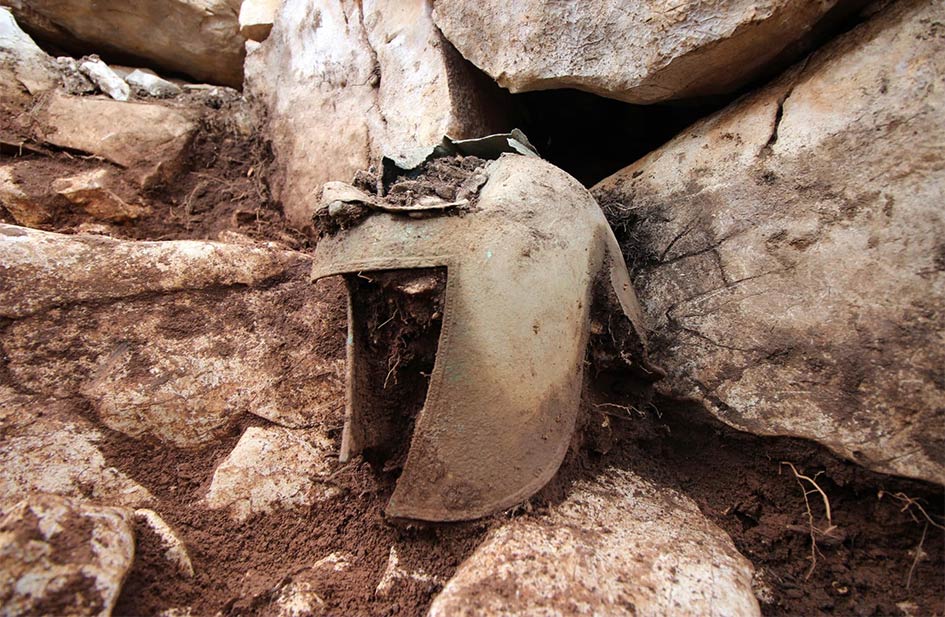Greek Helmet: An archaeological team working at the Illyrian Cave Sanctuary at Nakovana, on the Pelješac peninsula, Southern Dalmatia in Croatia led by the project coordinator, Dr. Hrvoje Potrebica from the Department of Archaeology of Zagredb University has unearthed a fourth century BC Greek-Illyrian war helmet with pieces of the skull still inside according to eu.greekreporter.com.
This is one of about forty helmets known to exist in the world and is extremely rare. The helmet design was open face and probably originated in Peloponnese in ancient Greece around the 8th century BC.
They were worn for centuries by the Etruscan and Scythian tribes of ancient Greece until about the 5th century BC and for as long as the 4th century BC for the Illyrians, a lesser known tribe.
Along with the helmet were weapons such as spears and knives made of iron, the remains of a woman with a bronze bracelet, bronze tweezers, fifteen bronze and silver clasps called fibulae, a dozen needles, about thirty luxury quality Greek vases and hundreds of glass and amber beads.

Unfortunately, the man’s skeleton was in poor shape possibly because the grave had been ransacked making one wonder what other beautiful treasures were lost.
Archeologynewsnetwork.com tells us the grave, cut out of solid rock, was a rectangle just under ten feet by about six and a half feet.
It was found in 2019 when a reconnaissance team from the Center for Prehistoric Research was sent out to find areas of possible archaeological interest in and around the Sanctuary which was originally discovered by Dr. Stašo Forenbaher the Research Advisor at the Institute for Anthropological Research and an Assistant Professor at the University of Zagreb in Croatia.
Dr. Forenbaher has discovered ritual areas that dated from the 4th to the 1st centuries BC containing fine quality pottery. Using modern research techniques, the team is able to discover both flat and mounded graves hidden in the rocky landscape. It was the restoration of one of these burial mounds that revealed the warrior’s grave goods.
More grave mounds were found around the village of Zakotorac where archaeologists hope to find even more evidence of burials and perhaps an ancient religious temple when the restrictions of Covid-19 are relaxed.
In 2016 archaeologists from Antiquity of Southeastern Europe Research Center of the University of Warsaw in Poland discovered the first known Illyrian palace complex in the small neighboring country of Montenegro when excavating the town of Rhizon.

According to scienceinpoland.pap.pl, the palaces were built in the 3rd century BC and may have been the residence of Queen Teuta the Untamable and later King Ballaios.
The architecture was completely unique with one palace built previous to 260BC and another after 250BC indicating two different kings used the palaces. Very little is known of Ballaios but enough coins stamped with his image have been found to know he was a powerful ruler from about 167BC to about 135BC.
The discovery of his palace also helps researchers put his line of succession in the correct order. The previous resident, Queen Teuta, ruled from 231BC to 227BC as Queen regent for her infant stepson.
A formidable ruler, she even took on Rome’s legions but was forced to surrender in 227BC. Montenegro still honors her with images on current currency and statues in town.
The oldest palace was a large room with a center standing fireplace surrounded by several marble columns where archaeologists found thirty coins, presumably a religious offering. Storage rooms for amphorae, large vessels used to transport wine and foodstuffs were found as well.
Another Article From Us: Irish Neolithic Tomb is the Oldest Monument in THE World
After that palace was attacked and destroyed, the second was built much larger with a kitchen and banquet hall, a mosaic floor created using pebbles and molded door frames around large wooden doors.
